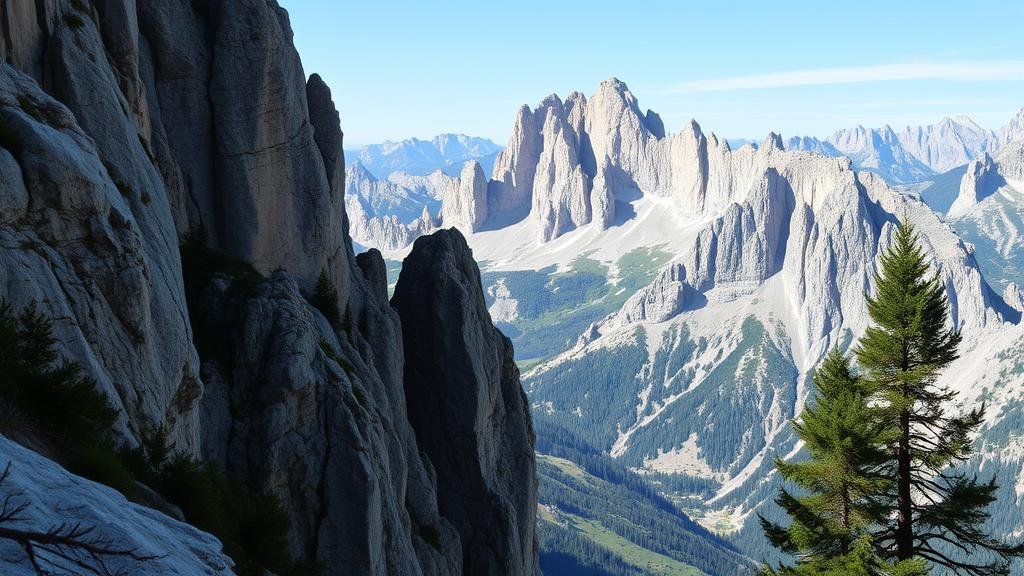Exploring the jagged peaks of the Dolomites for rare alpine species rumored to defy modern classification.
Exploring the Jagged Peaks of the Dolomites for Rare Alpine Species
The Dolomites, a dramatic mountain range located in northeastern Italy, are renowned not only for their breathtaking beauty but also for their unique biodiversity. This UNESCO World Heritage site is home to a myriad of alpine species, some of which remain shrouded in mystery and challenge modern classification systems. This article will guide you through the jagged peaks of the Dolomites, unveiling the rare flora and fauna that thrive in these formidable conditions.
An Overview of the Dolomites
The Dolomites, part of the Southern Limestone Alps, extend over 140 kilometers (87 miles) across northern Italy, from the Adige River to the Friuli-Venezia Giulia border. r distinct geological formation comprises limestone and dolomite rock, giving rise to the characteristic vertical cliffs and pointed peaks that attract climbers and hikers alike. With an elevation reaching up to 3,343 meters (10,968 feet) at the summit of Marmolada, the Dolomites host a range of microclimates that contribute to their unique ecosystems.
Unique Biodiversity and Rare Species
The alpine environment of the Dolomites supports a variety of rare and unusual species. The region is particularly noted for its endemic flora and is a crucial habitat for various alpine animals. Some specific examples of these remarkable species include:
- Dryas octopetala: Commonly known as the eight-petaled mountain avens, this low-growing flowering plant is specially adapted to thrive in harsh conditions.
- Alpine ibex (Capra ibex): A symbol of the mountainous regions, this resilient goat is known for its impressive climbing skills and is classified as Near Threatened by the IUCN.
- Petasites paradoxus: This unique plant, known for its large leaves, grows in wet, rocky areas and has intrigued botanists due to its ability to survive in extreme conditions.
Also, the Dolomites serve as a habitat for several rare insects and fungi, leading biologists to believe that many species remain undocumented and potentially unclassified. This has sparked interest in the region among researchers and conservationists alike.
The Challenge of Classification
Many species within the Dolomites evade simple classification due to their unique adaptations and hybridization. For example, the biodiversity hotspot is characterized by various ecological niches that allow for complex inter-species relationships. In some areas, the geologic isolation has led to speciation, resulting in organisms that exhibit traits not found in similar species elsewhere.
The case of Lycopodium clavatum, commonly known as clubmoss, illustrates this phenomenon. Although it is widespread across different regions, the populations in the Dolomites exhibit distinct morphological characteristics, leading to ongoing debates among taxonomists regarding their classification. Such complexities highlight the need for continual research and exploration in this unique environment.
Real-World Applications and Conservation Efforts
Understanding the biodiversity of the Dolomites is vital for several reasons. First, the unique species play a crucial role in maintaining the ecological balance within the region. Also, the genetic diversity contained within these species can provide insights into climate resilience and adaptation, informing conservation strategies worldwide.
Conservation efforts in the Dolomites are increasingly driven by organizations such as the Dolomiti Superski, which emphasize sustainable tourism while promoting habitat preservation. Recent initiatives include:
- Useing guided hiking tours that educate visitors about local flora and fauna.
- Establishing protected areas to minimize human impact on sensitive ecosystems.
Actionable Takeaways
For nature enthusiasts and researchers alike, exploring the Dolomites offers a thrilling opportunity to engage with some of the planets rarest species. Here are some actionable takeaways:
- Plan a visit to specific areas within the Dolomites known for biodiversity, such as the Sella Group or the Fanes-Senes-Braies Natural Park.
- Participate in guided eco-tours that focus on the flora and fauna of the region, fostering a deeper understanding of alpine ecosystems.
- Support conservation initiatives aimed at preserving the unique biodiversity of the Dolomites.
To wrap up, the jagged peaks of the Dolomites are not only a striking natural playground but also a treasure trove of biological diversity that merits exploration and conservation. With ongoing research and responsible tourism, we can help ensure that these rare alpine species continue to thrive for generations to come.



